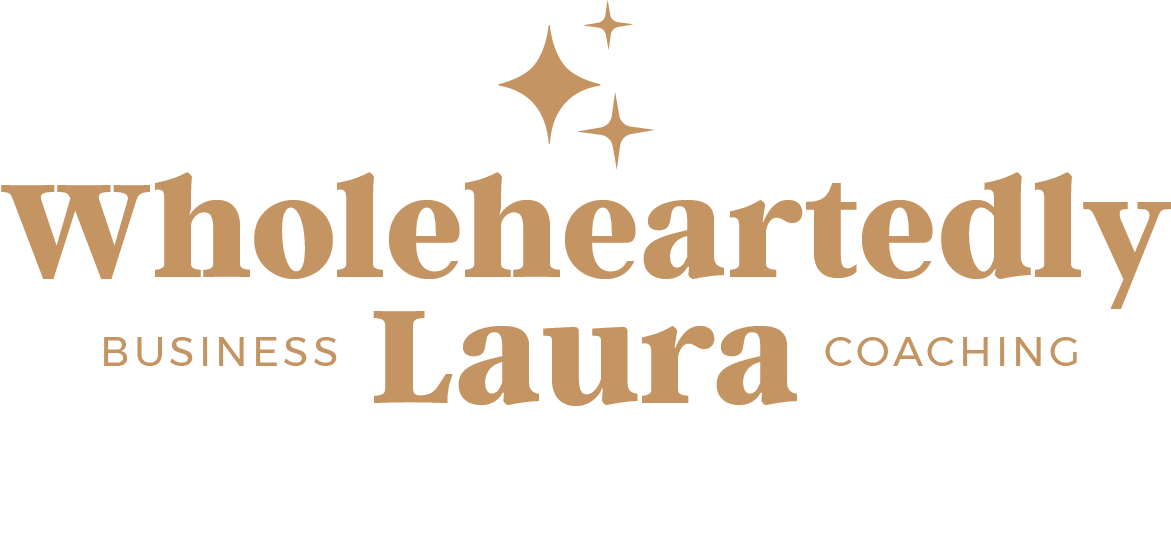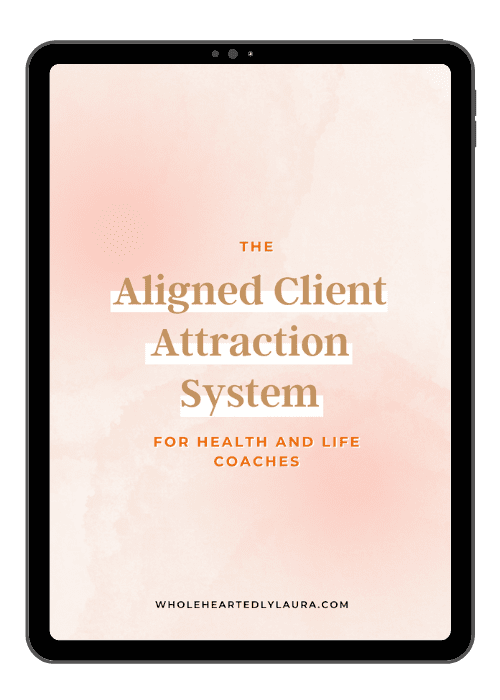If you’re running a business as a coach, you’re going to need a coaching program! But for many of us, when we get started it can be difficult to know exactly how to structure a coaching program – what to include in it, how to deliver it and more.
In this post I’m going to share my super simple approach for how to structure a coaching program which should help you whether you’re new to the world of coaching or are more established and are looking to create a new program or tweak an existing one.
Watch this episode on YouTube and subscribe to my channel here
Listen to this episode on The Wholehearted Business Show Podcast
Listen on Apple Podcasts / Listen on Spotify
A-B METHOD
I’m going to share a technique that I have used myself and that I use with my clients called the A to B technique.
You can download a free printable of this here (please note this will also add you to my list)
Or you can just use a piece of paper.
Draw a line down the middle of the paper and on one side write ‘Before’ and on the other side write ‘After’ so you have two columns.
In the ‘before’ column write as much as you can about how your ideal clients are experiencing life in relation to your niche before they work with you. Think about their problems, dreams, aspirations, what they want to achieve and write it all down.
This isn’t like one of those ideal client avatar things, I don’t want you to be writing down what they do in the morning or which magazine they buy, just focus on specific things relating to your niche.
Then in the ‘after’ column – yes, you guessed it, I want you to write down how they are experiencing life after working with you. How are they showing up differently? What has shifted for them? How does life feel for them now?
Beneath the two columns I’d now like you to write out any ideas you have about how you as a coach would help that person get from A to B (or before and after). Think of your own knowledge, experiences, your own journey and what you’ve learned from any coaching qualifications you’ve taken.
You might list out things such as:
Specific actions you’d want them to take
Resources that would help them
Mindset shifts you’d support them to achieve
Any habits or new practices you’d support them to implement
These things are essentially your coaching package! They’re the tools you’d use (alongside the coaching itself) to guide your clients on that journey from A-B.
STRUCTURING THE COACHING PACKAGE
Now that you have those things listed out, you can start and think about how you might structure it all.
A QUICK NOTE ON COACHING / MENTORING
Pure coaching is far less directive than a mentoring style, and it would be totally acceptable to have a coaching package that has none of these elements and that is purely based on holding space for people and allowing them to figure out their own answers.
But in my experience as a coach, most of us have a degree of mentoring going on as well in that we’re actively offering suggestions of next steps and actions people can take to bring them closer to their goals. This article dives deeper into the differences between coaching and mentoring.
TIMEFRAME
With that in mind, start and consider how long you might want to work with someone to help them achieve the shift we’ve looked at in the A-B method. How many sessions and over how much time do you think it would take to help someone make that journey?
It’s totally ok if you’re new and you’re not sure at this point. When I started out as a health coach I delivered a 6 month coaching programme and then shortened it to 4 months as most of my clients were achieving their goals in that time frame. It’s going to be a bit of a ‘try it and see’ approach when you’re starting out and that’s ok, we all start somewhere!
Once you have a number of sessions and a time frame (and remember that pricing might also come into it!) then you can decide how you might want to structure your coaching sessions.
PLANNING YOUR COACHING SESSIONS
If you want, you can decide exactly what you’re going to cover in each session, so session one we do this, session two this and so on.
However, in my experience it can work well to have a structure for the first session but then to allow the rest of the sessions to have more flow. In that case all of those things you listed can be used like a ‘tool box’ which you can dip in and out of depending on the client and their specific needs.
This also gives you flexibility to meet the client where they are and create a more personalised experience than a ‘one size fits all’ approach.
But if you’re starting out and want more confidence then having a structure is totally fine too!
So what this A-B method gives us is a really strong starting point when it comes to developing our coaching package, it gives us an understanding of our client journey, it gives us some tools we can use with our clients to help them make that journey and it is also awesome for sales copy as well!
Essentially that is your coaching package!
NEXT STEPS
You’ve got your point A and your point B, you know how many sessions you’ll have with clients and you know they’ll be variations but you have a toolbox of stuff that you can come to and use to help your clients get results.
Hopefully this makes it easier to communicate the difference your coaching package is going to make for your clients so it’s easier to sell it as well.
I use this A-B method for pretty much every package and programme I create and it’s always so simple and effective.
Don’t forget to grab the free printable that goes with this post and watch the video above for more detail and examples!
↓ PIN IT FOR LATER ↓





0 Comments